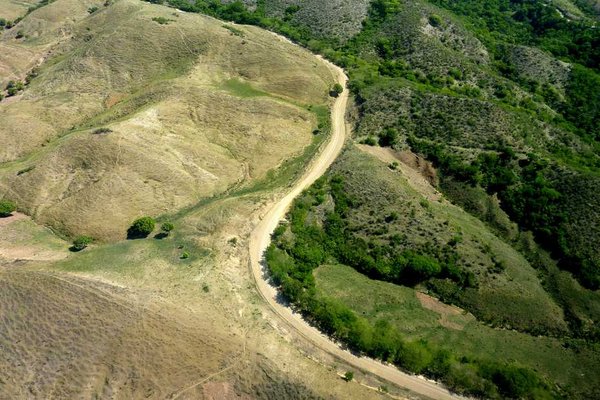- Share this article
- Subscribe to our newsletter
What is driving erosion world-wide?
Soil erosion has a whole host of causes, many of which are still not well understood. As yet, we don’t know, for example, whether and indeed how different countries influence the erosion of their soils. Research so far has focused on identifying correlations, such as the fact that erosion is more severe in poor countries than in rich ones. Identifying causal effects, on the other hand, has been and remains very difficult.
Remote sensing and modelling of soil erosion
David Wüpper and Robert Finger from the Group for Agricultural Economics and Policy at ETH Zurich, Switzerland, and Pasquale Borrelli from the University of Basel also in Switzerland, have now employed satellite imagery and numerous other data sources to investigate the socio-economic causes of soil erosion around the world.
On the basis of high-resolution remote sensing data and numerous other data sources, the researchers created an erosion map of the world. With the help of a statistical model, they then investigated whether the erosion rate generally changes continuously through space but "jumps" abruptly at country borders. Such “jumps” at political borders demonstrate the influence of the countries that are left and right of the borders.
National borders reveal where erosion is unnaturally high
It was through this approach that Wüpper and Finger were able to identify the “country effect” as a cause of soil erosion. The researchers present their findings in a study recently published in the journal Nature Sustainability.
This country effect is most visible along political borders as these areas offer the best basis for comparing observations. “The rate at which soils erode strongly depends on which side of a border, and accordingly, in which country the soil lies,” says lead author David Wüpper.
To illustrate their approach, the researchers use the island of Hispaniola, home to Haiti and the Dominican Republic, as an example. In its natural form, Hispaniola would be uniformly covered with dense tropical forest, and natural erosion would be very low because this vegetation would protect the soil from rain.
In reality, however, the researchers found that along the border, Haiti’s soils lose 50 tonnes more per year and per hectare than those of the Dominican Republic. Wüpper explains that if Hispaniola had not been subject to human intervention and were still in its natural state, there would be no sharp increase in soil erosion along the border. “But the presence of such a rise points to political entities, not natural borders,” he says.
The differential erosion along the border of the two Caribbean states is extremely high: 30 times higher than the global average, which – according to the researchers’ calculations – stands at 1.4 tonnes per year and hectare of arable land. A country’s strongest influence on soil erosion is its agriculture and the way that farmers cultivate the soil there. “The income level in a particular country, however, has no influence,” the researchers note.
High potential
In addition to highlighting failures and shortcomings in soil protection, the study also shows that there is clear potential for countries to improve their soil protection and how they go about it. Finger explains that before the study, nobody realised the huge leverage that the country effect would offer. In the past, soil erosion had been seen as a predominantly local problem. “Now we’ve shown that larger-scale factors also strongly influence erosion in a given country,” he says.
In addition, the ETH Zurich researchers’ method can be used to determine whether measures that countries take to improve soil protection are effective or not. One such measure, for example, is introducing economic incentives to encourage greater soil cover or reduced tillage. However, measures to protect against erosion can also result in new conflicts of interest if, for example, reduced tillage leads to increased use of pesticides for weed control.
(ETH/wi)
Reference:
Wuepper D, Borrelli P, Finger R. Countries and the global rate of soil erosion. Nature Sustainability (2019). doi 10.1038/s41893-019-0438-4:





Add a comment
Be the First to Comment